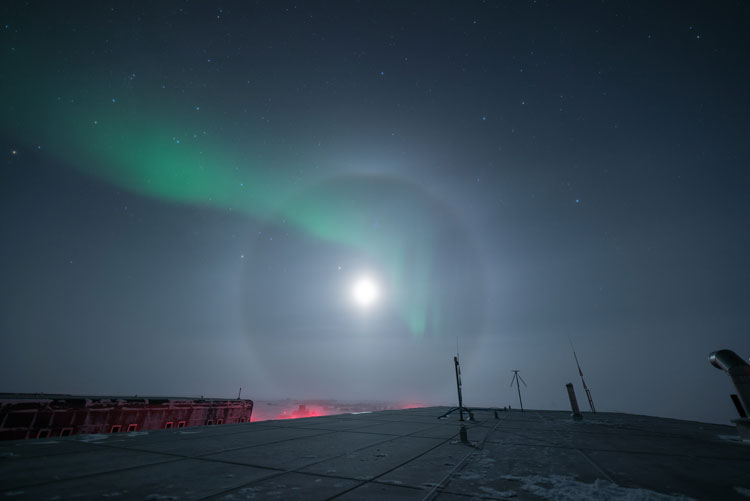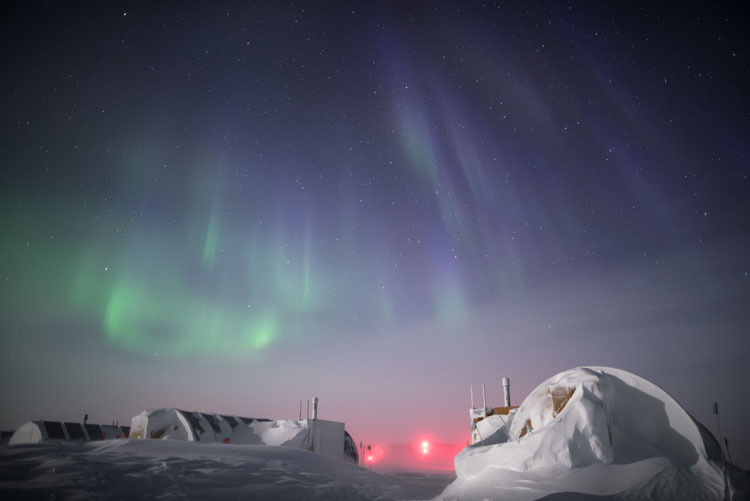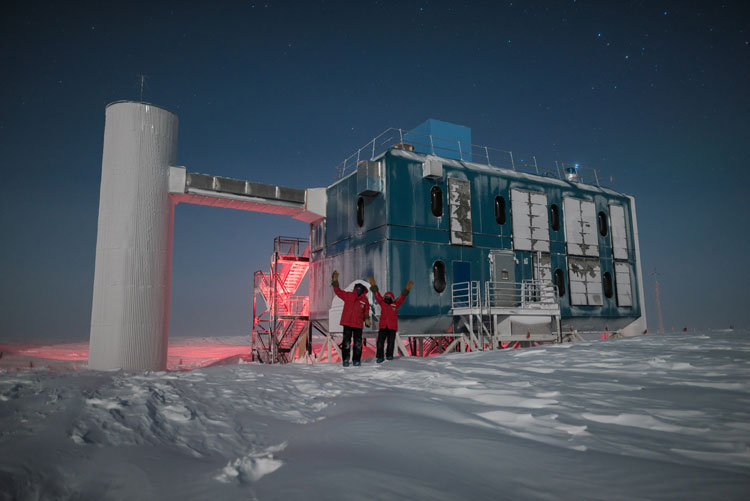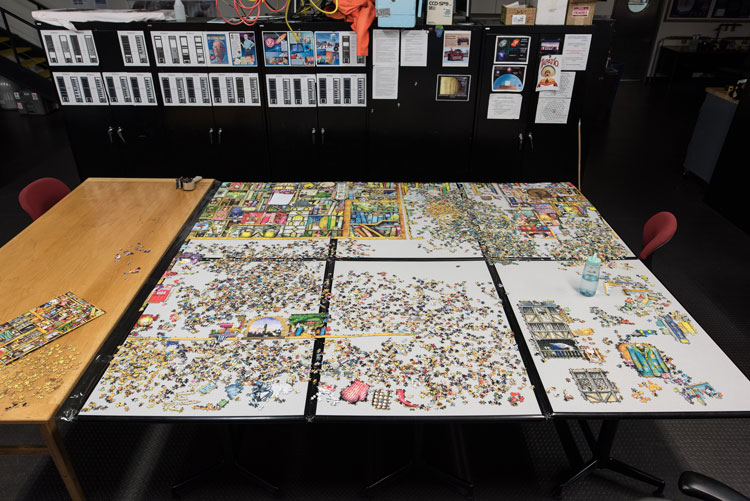Week 18 at the Pole

Even in winter, you can get an impressive halo—here it’s the moon. Halos are caused by light interacting with ice crystals suspended in the atmosphere, and these circular halos, which can form around the sun or the moon, are called 22-degree halos. They’re fairly common, seen more frequently than rainbows. The bright moon lit up the sky this week, showing off nice aurora showers. With the moon up, it was easier for IceCube’s winterovers to walk to the ICL (where you can see them waving, below), about a kilometer from the station, without stumbling in the darkness. At bottom, a puzzle update! Progress is clear. A few weeks in, and some sections have definitely come together.



